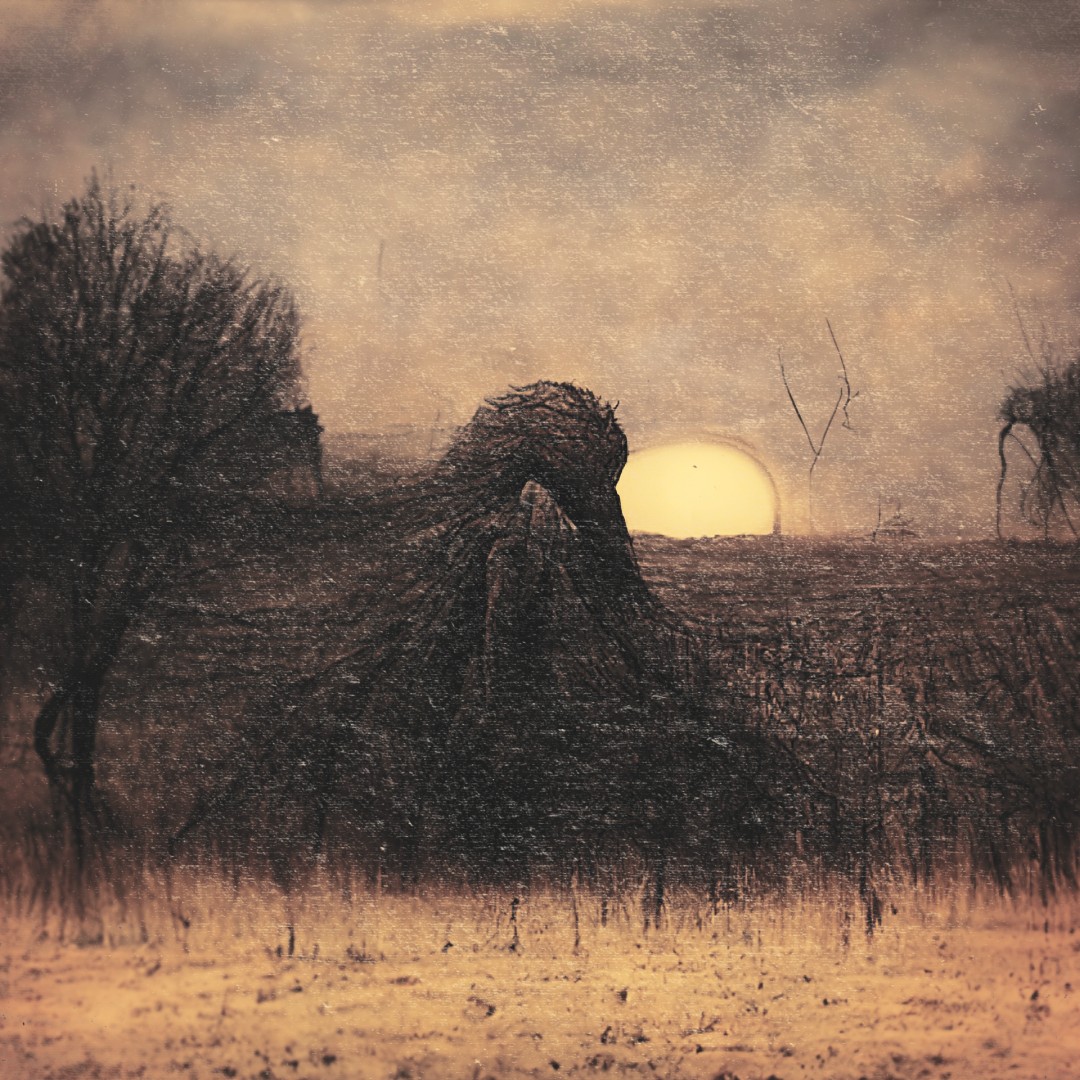
A From the Dust of the Old Hungarian Plains, Emerges the Invisible Claw that Drags Us into our Rotting Grave már a nevében, track-címeiben is utal arra, hogy körülbelül melyik területéről származol az országnak. Pontosítsunk!
Ízig-vérig alföldi gyerek vagyok, aminél unalmasabb és érdektelenebb tájegység nem nagyon van a világon. Dévaványa, Karcag, Debrecen háromszög határozta meg az eddigi életemet. Az albumon főleg az előbbi és az utóbbi helyszín adta életérzések jelennek meg.
Én még az a korosztály vagyok, akinek gyerekként nem hogy internet, de még TV sem nagyon volt, ennek minden előnyével és hátrányával együtt. Gyerekként zavaró tudott lenni egy masszívan ingerszegény környezet, amin a pusztaság nem sokat segít. De 2022-ben, felgyorsult világban, felnőttként, munkával, felelősséggel, időnként feltörő egzisztenciális rettegéssel az ember már másképp gondol azokra az időkre, amikor gyerekként órákon át egy szilváskertben ücsörögve, a határt bámulva unatkozott, mentesen minden problémától.
Mióta foglalkozol zenéléssel, és mi vitt rá, hogy ezzel a művészeti ággal fejezd ki Önmagad?
20 éve játszottam egy helyi black metal zenekarban, majd kihagytam 10 évet, aztán ismét egy black/death bandában kötöttem ki. Szóval az analóg, élő zenélést tekintettem mindig a normának, ehhez képest most ebben a digitális, szinte végig in-the-box szöszmötölős projektben élem ki magam.
Ez a projekt sem így indult, eredetileg ez egy akusztikus gitáros indie-folk valamiként élt a fejemben, de aztán ahogy hagytam történni a dolgokat maguktól, teljesen más lett és ez a főként dark ambient/drone vonal alakult ki.
Nem vagyok túl jó abban, hogy a gondolataimat szavakkal kifejezzem, különösen alkalmatlan vagyok olyan költői megfogalmazásra, amit ti összehoztatok az albumértékelőben. Így jól jön, hogy (valamennyire) a zenével is ki tudom fejezni magam. Csak egy csávó vagyok, aki próbálja saját magát megfejteni, és megteremteni a magának való hangulatot, a zenén keresztül is. Ha ezt valaki más meghallgatja és azt mondja, “Haver, én ezzel tudok azonosulni!”, annak kimondottan örülök. De ha ez csak magamnak lenne egy lenyomat a fejemben lévő dolgokról, az is rendben lenne.
Mik, és kik a fő zenei inspirációid?
Legfőképp black metalt és tróger (magyar) hip-hop-ot hallgatok, bár ezek maximum halvány nyomokban jelennek meg a BlackWeald-ben. Az előbbi nekem a mágikus világ, a valóságtól elmenekülés. Az utóbbi meg a “feel good” zeném (és szerintem egy indokolatlanul lenézett műfaj). Azért hallgatok sok stoner, elektronikus, avant-garde, meg ipari dolgot is. Újabban nagy kedvencem a Tyranny, a Revenge, Negative Plane, Full of Hell, Lord Mantis, Old Nick, Bong, Virus, de nagyon bejön az új cavern death metal vonal is. Meg Bohren & der Club of Gore első albuma, a Gore Motel pörög még sokat.
Legfőbb zenei inspirációk inkább személyek, a zenéhez való hozzáállásuk miatt. Michael Gira a Swans-ból, amiért a mai napig stílusfüggetlen tudott maradni, és közel 70 évesen is nyomja a repetitív, súlyos zenét, mindezt úgy, hogy a metal-hoz semmi köze. Justin Broadrick a Godflesh-ből, amiért nem fél hip-hop alapokra kemény gitárokat rakni és ezzel teljesen egyedit alkotni. Dylan Carlson az Earth-ből, mert képes atomjaira szedni a zenét magát, majd az ebből felépített dologgal megmutatja, hogy “Nekem ez a zene!”. Varg Vikernes, a törtető mentalitása miatt, amivel megmutatja, hogy hozzáértés nélkül, szar eszközökkel is lehet kiválót, újat és egyedit alkotni, ráadásul hót egyedül.
Ebből egyedül az Earth ami szerintem felfedezhető a BlackWeald számokban, nyilván a drone vonal miatt. Bár ért már meglepetés, amikor pl. a Kapteyn's Darkness számomra valaki azt mondta, hogy “olyan mintha a Boris akarna Hawkwind-et játszani”, én meg csak lestem, mert egyikőjüket sem hallom abban a számban, viszont mindkettőt gyakran hallgatom.
Ennél a projektnél egyébként fontosabbak a nem-zenei hatások. A mondák, régi történetek, mitikus lények, helyek, események, amikből ezer ötletem is lenne, hogy miket kéne zenei formátumban feldolgozni. És persze minden médiumból jönnek a hatások, legyen az film, vagy játék.
Filmek terén John Carpenter, Ari Aster, Taylor Sheridan, Tarantino, Coen Brothers, Martin Scorsese, Robert Eggers, Ti West, David Fincher filmjei. Nagy kedvencem az Alien, Nightcrawler, American Psycho, Full Metal Jacket, Nocturnal Animals, Perfume.
Festők közül Zdzisław Beksiński, Theodor Kittelsen, Ritók Lajos, Mariusz Lewandowski, Jakub Różalski.
Könyvek terén Nemes István az etalon nálam, valamint Lovecraft, Ted Chiang, Thomas Ligotti.
És persze simán a játékok is, amiknek, mint bugyuta szórakozásnak, sajnos rossz hírnevük van. A kedvencem a Souls széria, de imádom a Witcher-t, a Subnautica-t, XCOM-ot, a Soma-t.
Az album jellemzése, és a valós tartalom között óriási a hangulatbeli különbség. Direkt-e ez a meseszerű, ártatlan "promó"? Ez egyfajta hatásvadász megközelítés volt? (A mundane summer day in the rural Hungarian plains. The ambitious morning is washed away by heat, dust, and endless dry wheat fields. As the evening approaches, dullness, longing, and boredom set in. Even if something sinister happens each night, it goes unnoticed by most. Each new dawn is just another step closer to the inevitable end.)
Én ezt valóban egy könnyed, ártatlan anyagnak tartom, még ha kicsit keserédes is a témája.
Ez is egy kiváló példa arra, hogy mennyire különbözünk egymástól az emberek. Mennyire fogalmunk sincs kinek mi jár a fejében. Félsz-e a halál utáni nem-létezéstől, megnyugtat-e a gitárzúzás, kimondottan szereted-e a monotonitást, kis mell vagy nagy csöcs párti valaki stb. És ez csak a felszín. Fogalmunk sincs, hogy kiben mi mozog legmélyen.
Ezért sem szoktam túlmagyarázni amit én gondolok egy-egy anyagról. Mármint, érdekes lehet, viszont ezzel elveszem a lehetőséget, hogy a hallgató saját magát megtalálja a zenében. Érted, azt mondom neked képzelj el egy farkast. Megvan. OK. Most azt mondom, hogy képzeld el, hogy kék kabát van rajta. Hopp, máris kiderült, hogy te egy szibériai véresszájú ragadozót képzeltél el, pedig én a Piroska és a farkas mesében lévő rajzolt állatra gondoltam. Minél többet mondok, annál jobban beszűkül, hogy a hallgató mit projektálhat bele. Szerintem tök jó, ha tere van mindenkinek a saját dolgait belelátni a zenébe.
Tehát amit én gondolok az album történetének és hangulatának, az nem kell, hogy egyezzen a másban kialakult képpel. Persze én nyilván egy narratíva tudatában építettem fel az egészet, de egyébként az én fejemben sem tiszta teljesen a kép. Egy-egy ilyen album néha szinte terápiás önreflexió, feljönnek mélyről dolgok, a jelentéseik pedig számomra se feltétlenül világosak. Zenéléskor és a koncepció terén is gyakran hagyom, hogy csak úgy maguktól történjenek a dolgok és sokszor én is utólag jövök rá, hogy mi miért kerülhetett oda.
Na de konkretizálva, a koncepció úgy indult, hogy akartam egy nyári hangulatú, kimondottan könnyed albumot. Ebből jött, hogy ez lehetne akár egy teljes nyári nap, reggeltől másnap reggelig. Az éjszakához illő zenék terén aztán elszaladt a ló és elbillent a mérleg nyelve, talán ezek lettek így a hangsúlyosabb részek. Ráadásul a végén jöttem rá, hogy ez nem csak egy érdektelen napként értelmezhető, hanem egy egész érdektelen élet történeteként is.
Ezeket az anyagokat, mint a From the Dust…, vagy a 666 Minutes in Hell, csak fél-koncepció albumnak tartom, mert van ugyan egy vázlatos narratívája, de nincs egy teljesen konkrét történet mögötte, ellentétben a Leonovval vagy a She and the Devil’s Sons-szal.
Foglalkoztál valaha népzenével, milyen a kapcsolatod a folklórral, mit mond neked?
Nem igazán, és a From the Dust…-on levő népzenei dolgok sem úgy jelennek meg számomra az anyagon, hogy “Ezt most odarakom, mert népzene.”, sokkal inkább csak mint régi korokra emlékeztető kapaszkodó. A folklórral sem foglalkozom mélyen, de mint minden egyéb rejtélyes téma, ez is érdekel.
Igazából a BlackWeald-ben bármi megjelenik, ami számomra misztikus, ismeretlen vagy felfoghatatlan. Eddig két vonal jelent meg erősen, az egyik ez az ősi, okkult, mitikus vonal, a másik ez a kozmológiás / asztronómiás / űrkutatásos, ami éppen olyan nem-evilági, mint az első.
Hadd tegyen hozzá, földhözragadt ember vagyok. Nem hiszek semmi felsőbbrendű meg túlvilági dologban, de valahogy mégis vonz az összes ilyen téma. Gyanítom ez ilyen unalmas valóságtól való elvágyódásból fakad. Hiszen mennyivel érdekesebb lenne a világ, ha valóban ufók és démonok járnának köztünk.
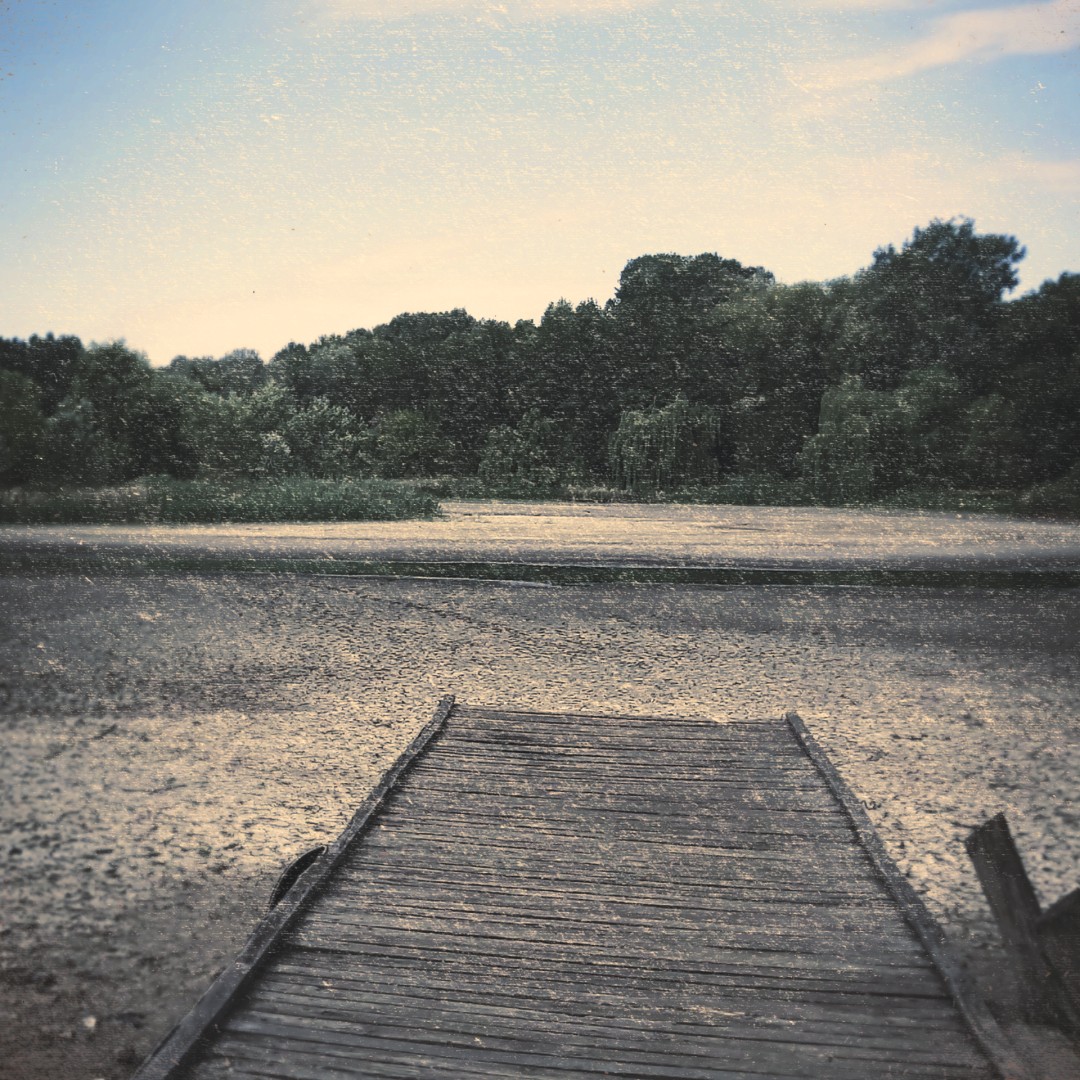
Milyen a viszonyod a vidékkel, az Old Hungarian Plains-szel, az albumon megjelenő földrajzi nevekkel?
A track-ekben említett helyektől mindtől biciklizhető távolságra lakom, így gyakran járok feléjük. Ezek a tavak a booklet-ben is megjelennek, egyébként hol kiszáradnak, hol tele vannak. Érdekes egy kiszáradt tó medrében sétálni, kapsz egy új élményt, de közben amiért odamentél, a tó, nincs ott. Azt gondolnád,” Történhet velem vagy a világban bármi, azt soha nem vehetik el tőlem, hogy kimenjek a Vekeri-tó partjára bámészkodni. Egy kibaszott tó mégis csak egy biztos pont a világban, nem?” Nos, nem az.
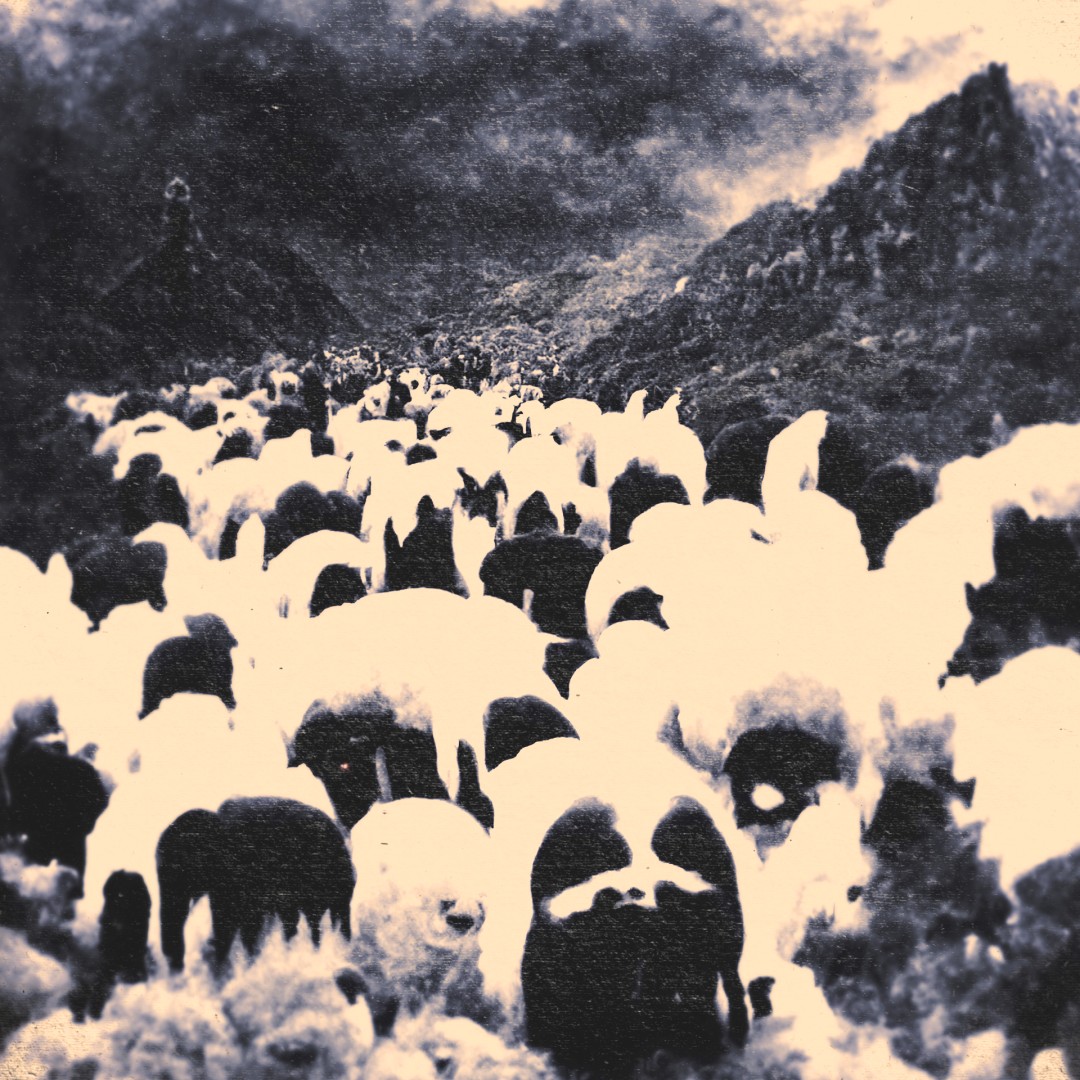
Egyértelműen megjelennek vallási elemek az anyagon. Az ördög, a bárányok. Mit jelképez a holttest, és ki/mi a lurker?
Vázolom, hogy az én fejemben mi van az anyagról. Röviden és nagyon átvitt értelemben. A Morning Came with a Cartload of Dew adja a bizakodó reggelt, a kellemes és nyugodt ébredezést, aztán a Desolation in Dust–ban a poros munkával beköszönt a valóság. A “tóparton” heverészés az At the Shores of Dry Lake Fancsika-ban ad egy laza bambulós megnyugvást, de később egyre elviselhetetlenebb a hőség - Vekeri, 37 °C, Drought. Közeleg a munkanap vége, a This Rake Stays Leaned Against the Wall-ban az ember már elengedi a teendőket. Hazasétál és élvezi, hogy végre megszabadult egy kicsit a többi embertől - Infinite Nihil. Elalváskor eszébe jut egy mese, a The Devil and the Peasant amit gyerekkorában sokat hallott, majd az I am the Darkness, I am your End-el beköszönt az este.
Éjszaka pedig még a legunalmasabb faluban is történhetnek rejtett dolgok. Vagy csak annyira vágyódunk ki az unalomból, hogy szeretnénk hogy történjen valami izgalmas, még ha gonosz is? Áldozatok (Blood of a Thousand Lambs) és valami furcsa rituálé (A Corpse Stuffed with Night-scented Stock), ami felébreszt valami nálunk hatalmasabbat (The Lurker is Getting Awake), ami neked címezve csendben elhoz egy dobozka poklot (Hell in a Tiny Box). Reggel aztán felébredsz és minden kezdődik elölről. Semmi nem változott, de minden nappal közelebb kerültél a sírgödörhöz (One Step Closer to the Pit). Próbálsz belenyugodni. Tetszik, nem tetszik, ez van. (Plague of the Plains).
Ez a legalsó sík, de ezt az egészet rá lehet húzni egy élet síkjára is. Az elején vidám és bizakodó kisgyerek vagy, aztán beköszönt a folyamatos iskola/munka. Néha megpihensz, néha nehéz és túl sok és összenyomva érzed magad az élet súlyától és csak arra vágysz, hogy hagyjanak végre békén. Visszagondolsz a gyerekkorodra, a mesékre, hogy mi mindent vártál az élettől, de már egyre rövidebbek a napok és közeledik a sötétség. Izgalmas dolgok történnek a világban és szeretnél a része lenni ezeknek, de te már fáradt vagy és kimaradsz belőle. Ott bujkál már körülötted a vég, és bármikor elvihet, aztán egy dobozba zárva visszakerülsz a puszta földjébe. Aztán kezdődik minden elölről, csak már nélküled. Ugyan ez vár az utódaidra. Fogadd el.
Leírva ez elég komornak hangzik, de számomra ez inkább a felismerésről, az elfogadásról szól, arról, hogy találd meg a komfortot ebben a helyzetben. Meg kell jegyeznem, nem vagyok az a fajta, aki egész nap lehangolva jön-megy és ilyen zord témákon jár az esze. De valahol legmélyen biztosan aggasztanak ezek a dolgok, és zenéléskor előbukkannak.
Próbálhatjuk a bennünk levő dolgokat a Plutchik féle érzelmi kerék szerint kvantálni, de ennél azért árnyaltabb a világ. Megjelennek itt olyan érzések, hangulatok, amiket én magam szavakkal nem igazán tudok kifejezni. Legalábbis leírva elveszik a lényegük, ráadásul rettenetesen kuszán hangzanak. A tested visszafordíthatatlan öregedése. Félelem, hogy fel tudod-e készíteni az utódaidat az életre. Vágyódás egy régi, egyszerűbb világra. De akár ilyen apró dolgok is, hogy milyen jól esik egy zajos, eseménydús nap végén leheveredni és megpihenni. Vagy ilyen kusza érzések, amikor random előtör egy gyerekkori emlék, ami tizenéve nem volt a fejedben, és nem érted miért, és mit keres most ott.
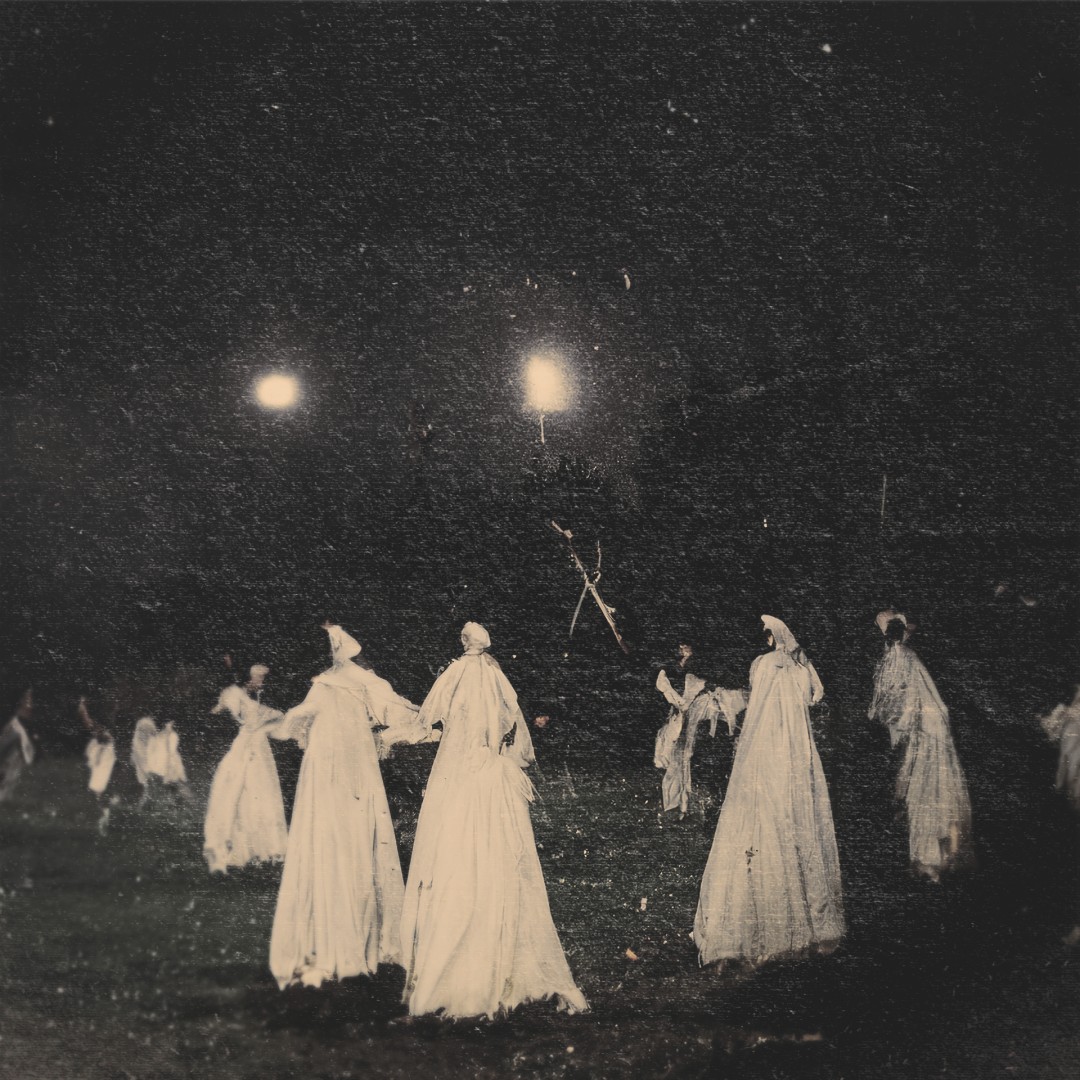
Hogy viszonyulsz a vallásokhoz? Mennyire határozzák meg ezek az elemek a munkáid?
A vallás, mint régi idők misztikuma, mindig is érdekelt, akár az Ábrahámi, akár a keleti vallásokról legyen szó. Ezek a világ legnagyobb és legrégibb mondái, így szerintem természetes, hogy az ismeretlenre nyitott emberek gyakran elmerülnek a vallástörténelemben. Annyira, és csak annyira érdekes, mint a Csodaszarvas meséje. Régiek, ismeretlenek, tele vannak erős szimbólumokkal és néha egyszerűen izgalmas történetek. Ennyi, nem több.
A mai kor szellemében a vallás pedig csak még egy dolog a sok közül, amivel az emberek feleslegesen megosztják egymást. Így is minden témában arra sarkall a világ manapság, hogy vagy az egyik, vagy a másik szélsőséget képviseld. Értelmes párbeszéd, középút nincs. Az emberek folyton a különbségeket keresik egymás közt, aztán arra mutogatva kötekednek, ahelyett, hogy meglátnák egymásban azokat dolgokat, amikben egyeznek. Ha jól kijövök valakivel akkor kit érdekel kihez vonzódik, politikailag mit gondol vagy hisz-e istenben.
Félreértés ne essék, nagyon szeretek tőlem teljesen más nézőpontú emberekkel beszélgetni vagy vitázni, de azzal a céllal, hogy talán mind a ketten valami újjal és többel jövünk ki a beszélgetésből. És azért hippi sem vagyok, vannak emberek/nézetek, amiket csípőből istenesen gyűlölök, de közben mindig próbálom feltenni magamnak a kérdést: “Számít ez? Van értelme ezen gyűlölködnöm? Valóban érint ez engem?” Küzdök az ösztönösen bennem levő vagy a belém nevelt negatív fellángolások ellen.
Milyen céljaid vannak a zenével? Az album bemutatóban említettem pl. a horrorfilm-soundtracket, esetleg ilyesmi felhasználás?
Hangulatot, atmoszférát átadni, valami történetet elmesélni. Fogyasztóként is ezért hallgatok zenét, hogy valami olyan helyre vagy állapotba vigyen el a zene, ahová egyébként nem (könnyen) jutnék el. A saját dolgaimmal is ez a cél. Biztosan önelégülten hangzik, de én sokat hallgatom a saját zenéimet. Az elkészültükkel is az a cél, hogy egy bennem lévő hangulatnak valami lenyomatát képezzem, és gyakran van kedvem vissza-visszatérni abba a világba.
Szeretném tágítani a zenei palettáját a projektnek, mert most elég beszűkültnek érzem. Ami főleg az életkörülményeimnek köszönhető. Egyszerűen most a gép elé leülni és ott pötyögni a legkézenfekvőbb, ami persze a felhasznált eszközök által meg is határozza milyen elemek találhatók a végeredményben.
Vannak tervek a fejemben, amikhez nem érzem megfelelőnek a körülményeket, avagy nem érzem elég érettnek zeneileg a projektet. Hiába akarok egy Sonoran Rebel Black Magick / Swans / Down jellegű anyagot, ami gyakorlatilag teljesen összeállt a fejemben, mivel csapnivaló gitáros vagyok, és kevés alkalmam van vokált rögzíteni, ezért ha most nekiállnék, annak egy helyben topogás lenne a vége. Hagyom még érni. Ahogy sok egyéb tervet is. Szeretnék például egy egész spoken word albumot, olyan hangszereléssel, mint a poklos albumon levő Floods and Whirlwinds of Tempestuous Fire, mert szerintem kurvajó az a szám. De ami nem megy, azt inkább félreteszem.
Azért ambient műfajon belül is van ötlet még bőven. Van vagy 3-4 befejezetlen (és beláthatatlan) album az asztalomon, meg vagy 20 koncepció, amit szívesen megcsinálnék. Csak legyen meg rá az idő és a lelkesedés.
Akár egy soundtrack is érdekes lenne, sok megkötést adna, ami fejlődésre sarkallná az embert, ahogy egy kollaboráció is.
Ha elkap egy koncepció és van ihlet, akkor baromi gyorsan tudok dolgozni, ez az album is kb. 3 hónap munkája, átlag napi 1-2 órát beleölve. Persze a gyors tempó miatt maradnak benne hibák. Vannak munkafázisok amiket szeretek, pl. a hangokat felkutatni, a sound design, az artwork, visszahallgatni a félkész cuccokat. Szeretem az egész audio engineering részét a melónak, a mixelést, a DAW-ban molyolást. És persze vannak amikkel szenvedek, mint például a felvételek, újra meg újra, loop-okat időzítgetni, vokált és dobot mixelni, meg a masterelésben is el szoktam veszni.
A legnehezebb amikor már van anyag, van koncepció és el kell kezdeni. Nekem az rémisztő az a szakasz, mert amíg csak a fejemben van a cucc, addig bármi lehet a végeredmény. Viszont ahogy elkezdődik a tényleges munka, onnantól beszűkül a dolog, megtörténik egy elköteleződés és eltűnnek a lehetőségek. Már nem lehet bármi, mert EZ lesz. Minden más, ami lehetett volna, az homályba vész.
A bandcampen látható képi világot is te tervezted, ennek mik a fő inspirációi?
A From the Dust… album képei között vannak saját fotók és AI generálta képek is. Elég erős eszköz manapság ez az AI képalkotás, főleg a magamfajtáknak, akik nagyjából le tudják írni mit és hogyan akarnak látni, de nulláról megalkotni képileg már nem tudnák.
Így, mint a zenében is, a képekben is felhasználok előre készült dolgokat, transzformatív módon, de a végeredményt azért magam bütykölöm össze. Amíg a keveréssel, mastereléssel tökölök, addig pont van idő dolgozni a képeken és a klippen is. Persze a klip is, ha készül egyáltalán, tök egyszerű. Az új anyaghoz is csak egy lassú mozgókép egy búzamezőről, amiben hol a szaturáció, hol a színek változnak. Ennyi. Ha már úgy is feltöltöm Youtube-ra akkor ne egy statikus kép legyen.
Ez teljesen egy DIY projekt. Nyilván nem olyan szinten, hogy saját kecskét nevelek, aminek a bőréből készült egyedi sámándobon játszok. De igyekszem magam elvégezni minden feladatot a végtermékhez. Az eddigi egyetlen önálló fizikai kiadványom (a Sedna kazetta) is 100%-ban saját gyártás, borítótól címkén át a duplikálásig. Ráadásul mindezt szinte no-budget módon, fapados eszközökkel. Spotify-on is csak annyi pénzt szedek össze egy hónapban, hogy a saját előfizetésem éppen ki tudom belőle fizetni.
Az, hogy ez egy teljesen underground projekt, ad egy baromi nagy szabadságot. Látom, tudom hogyan hallgatnak új zenét az emberek. Kijön az új cucc, 1000 ember meghallgatja az első szám első fél percét. Marad 100, aki egyáltalán végighallgatja az egész első számot. Lesz 10, aki belehallgat talán a másodikba is, és 0 vagy 1, aki netán végig hallgatja az egész anyagot. Adná magát, hogy a legütősebb, legfogósabb, legfaszább számot tegyem be elsőnek. De ha a koncepció szerinti első szám nem ilyen kimondottan ütős? Na ezek azok a dolgok, amikkel nem kell törődnöm. Főleg, hogy ez még a metalhoz képest is rétegzene. Érted, ki a fasz kíváncsi egy 11 órás nyomasztó ambient/drone lemezre? Nem sokan. Kár lenne megerőszakolni a koncepciót bármiféle valós vagy képzelt külső elvárással.
Ha bármit kihagytam, vagy szeretnél olyan dologról beszélni, amit fontosnak találsz kiemelni, azt kérlek ne tartsd magadban!
Mivel szerintem elég könnyen el lehet veszni az eddigi 12 BlackWeald kiadvány között, írnék róluk pár sort, hátha valamelyikhez kedvet kap valaki.
A Грайи, rettenetesen kezdetleges anyag, egy pici gitárral kezdődik, aztán egy végtelenül elnyújtott monoton drone az egész. Az én fejemben itt a mitológiai “három öreg szürke boszorkány” jelenik meg, de ez semmit nem jelent, mert zeneileg erre nincs utalás. Nem igazán figyelemre méltó.
Az Under the Moon of the Dead Pig egy sikeres éjszakai rituálé drone-ba foglalva. Itt a kihívás az volt, hogy csak manipulált sample-ökből összehozni az anyagot. Elég primitív és nyers lett, de én nagyon szeretem.
A Patricia egy elég elcseszett, hangos, abrezív drone cucc, furcsa spoken word szekcióval, mocskos témával. Ez kicsit ilyen gőzkieresztés volt.
A She and the Devil’s Sons egy válogatás felkérésre készült, ahol egy helyi folklórt kellett feldolgozni, én pedig Hollókő legendáját választottam. Ez az első valóban narratív anyag, hiszen végigmegy az egész sztorin, ahogy elrabolják a lányt, bebörtönzik, majd a dadusa szövetségre lép az ördöggel és az ördögfiak hollóként kiszabadítják.
Ha nincs a felkérés, akkor ez az anyag biztosan nem készül el ebben a formájában, mert a szám hosszára való megszorítás miatt teljesen másképp kellett dolgoznom, mint ahogy egyébként csináltam volna. Ami tök jó, mert ez új nézőpontot adott. Dark ambient és drone között néha vékony a határvonal, de szerintem ez az első valóban dark ambient anyaga a projektnek.
Ez után jött a Leonov, mert muszájnak éreztem a kedvenc kozmonautám hősies űrsétáját zenére vinni. Mivel megtörtént esemény, itt is végig kellett menni a sztorin, ami miatt megint olyan dolgokat csináltam, amik nekem újak voltak. Ez az első futurisztikus témájú lemez, ráadásul az egyik legsikeresebben fogadott BlackWeald anyag.
Az I Saw The Devil is egy felkérésre született single, mentális harcok témájában. Itt már elkezdtem kicsit komolyabb technikákat használni, kevesebb sample-t, normálisabb master-t. A szám végére pedig egy kis blastbeat-es black metal-os zúzás is belekerült.
A Pure aközben született amíg a következő monstrum anyagon dolgoztam, szintén gőzkieresztés gyanánt. Egy koncepció nélküli, természetközeli, laza hangulatú ambient lemez lett.
Ez után jött a nagyágyú, a 11 órás 666 minutes in Hell, ami akár a szó szerinti, akár átvitt értelmű pokol legmélyére süllyedésről szól. Elég hosszú és sötét utazás lett. Belekerült mindenféle hangszer és eszköz, ami a kezembe akadt, elektromos gitár, akusztikus dolgok, zongora, harsh vokál, de vannak rajta indusztriálba hajló meg rituális elemek is. Nyilván nehéz összefoglalni egy ekkora anyagot, mert hosszabb, mint az összes egyéb BlackWeald cucc együttvéve. Sokan azt gondolják, hogy ilyen gimmick meg hatásvadászat miatt lett ilyen baromi hosszú, holott 16 órás volt eredetileg és nem győztem lefele faragni. Oké, drone dolgokat túl lehet húzni, de ez sehol nem volt szándékos.
A BlackDroneHell808Fuckery egy válasz a poklos albumra. Egy akkora monstrum anyag után semmi kedvem nem volt ambient-en dolgozni, így itt minden más megtörtént, amiknek ott, a másikon nem volt helye. Van itt drone metal, doom metal, black metal, industrial, még trap is, de nagyon amatőr cucc. Tele van torzított hangszerekkel, de ebből nagyon kevés a gitár, a legtöbb inkább széteffektezett szinti.
A Kapteyn's Darkness is egy válogatáshoz készült, ez az első alkalom, hogy CD-n megjelent a projekt valami anyaga. Rövid elektronikával fűszerezett space ambient.
A 90377 Sedna is egy space ambient anyag, ami egy fiktív rémtörténeten alapul. Itt azt vettem a fejembe, hogy én ezt megcsinálom kazettán, ha a fene fenét is eszik. A borítóképekkel, a kazettával és a klippel szerintem tízszer annyi időt eltöltöttem, mint a zenével magával, de ha az ember egyszer a fejébe vesz valamit…
Az új From the Dust of the Old Hungarian Plains, Emerges the Invisible Claw that Drags Us into our Rotting Grave-ről pedig már sokat beszéltünk itt. Itt a vidéki hangulat, a spoken word mese, az Earth jellegű “egy szál gitár” szám, a rituális dobolós nóta már az elején megvoltak, mint ötletek. Kapcsolódási pont a poklos album, mert a Hell in a Tiny Box-ban próbáltam 666 minutes világát 20 percbe zanzásítani. A Plague of the Plains pedig egyébként a Mayhem Cursed in Eternity-jének egy szétbombázott riffjén alapszik. Most, hogy belegondolok, annak a dalnak a szövege nem kicsit átfedésben van az album témájával.
A folytatás pedig, ki tudja. Nem kevés cucc van, ami szinte csak befejezésre vár, de valószínű nem véletlen nem tudom/akarom befejezni őket. Majd történi, aminek történnie kell.
Köszönöm a lehetőséget.
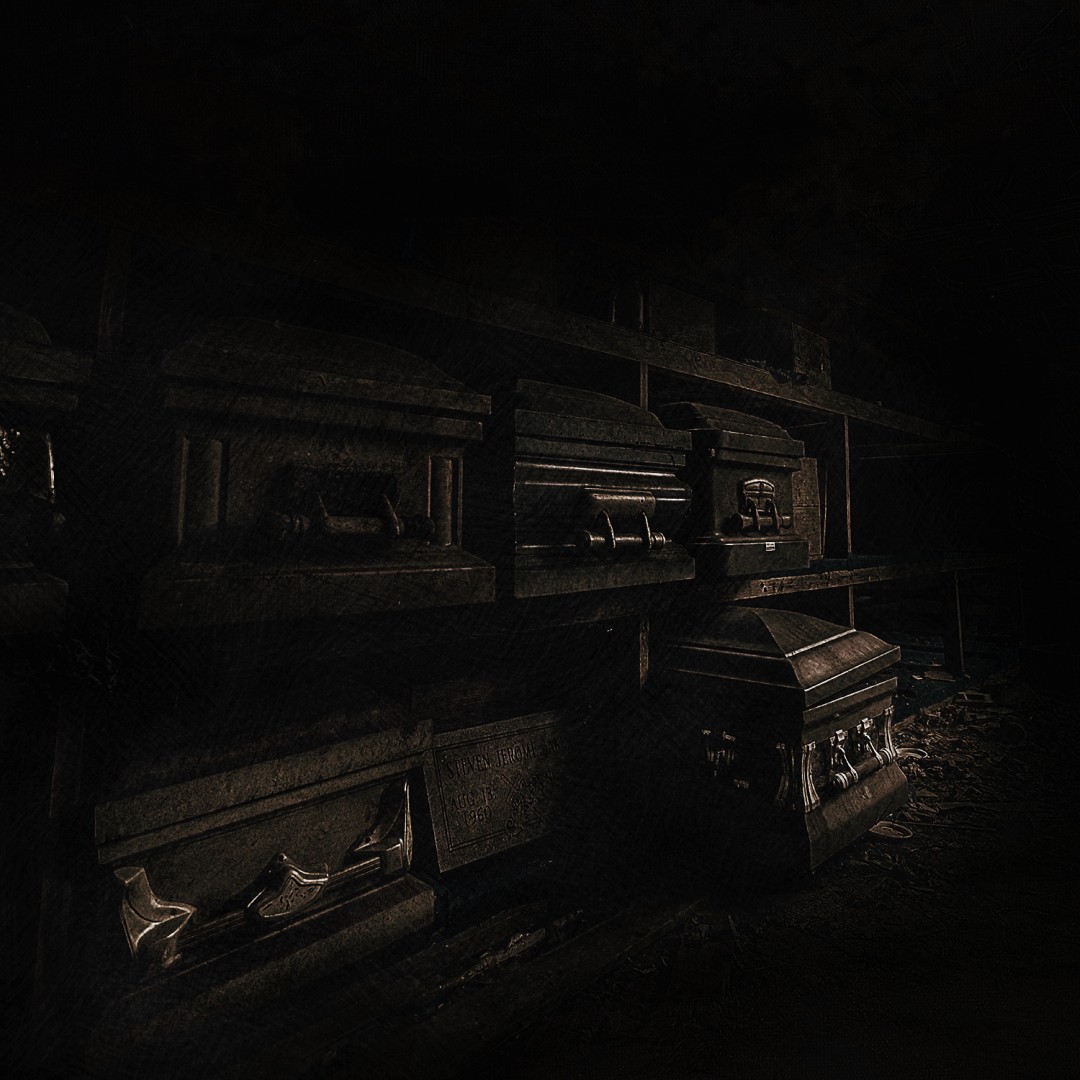
************************************************************
The title, ”From the Dust of the Old Hungarian Plains, Emerges the Invisible Claw that Drags Us into our Rotting Grave” and some tracknames point roughly to a location where you live. Let’s make that clear!
I’m a Great Hungarian Plain’s guy to the core, which is the most uninteresting and boring landscape one can imagine. I lived my life around the Dévaványa, Karcag, Debrecen triangle. On this album, atmospheres from the former and the latter place are present mostly.
My generation did not have internet, sometimes not even TV during childhood, which has its pros and cons. It can be annoying to live in an uneventful, dull environment, on which the plains as a landscape does not help. But in 2022, in this accelerated world, with jobs, responsibilities, and existential dread checking-in sometimes, then you look back differently on those times when you were just sitting in a garden full of plum trees, staring at the infinite skyline, not having a problem in the world except for boredom.
What’s your story as a musician and what made you choose this artform to express yourself?
20 years ago I was playing in a local black metal band, then skipped 10 years of playing music, then I found myself again in a black/death band. So the standard for me was always the analog way of playing live music, but now I’m expressing myself in this mostly in-the-box, digital world.
Interestingly, this project started as an acoustic indie folk-ish idea. At least that was the plan, but then as I let things just happen naturally, it turned into this mostly dark ambient/drone genre.
I’m not too good at expressing my thoughts verbally, I’m unable to be that poetic as you were in the album review. So making music is a good opportunity to complement the innate need to express yourself. I’m just a dude who tries to understand himself and create his own comfort via music. If someone listens to it and says “Man, I can also find myself in this!” that’s great. But if it would just be a snapshot for myself about the things in my head, that would be fine as well.
Who and what are your main musical influences?
My two favourite genres are black metal and trashy (Hungarian) hip-hop, but these do not strongly appear in BlackWeald. The former is the magical world for escapism. The latter one is my “feel good” music (and I believe it’s an unreasonably despised genre).. I also listen to a lot of stoner, electronic, avantgarde and industrial stuff. I recently really enjoy Tyranny, Revenge, Negative Plane, Full of Hell, Lord Mantis, Old Nick, Bong, Virus, and this new cavern death metal movement. The first Bohren & der Club of Gore record, Gore Motel, is also spinning a lot.
Musical inspirations are rather persons, due to their attitude towards music creation. Michael Gira from Swans, who is still genreless and despite being 70 years old, still able to play punishing, repetitive music, without metal instrumentation. Justin Broadrick of Godflesh, who just puts heavy guitars on hip-hop beats and by this, creates something totally unique. Dylan Carlson from Earth, who disassembles music, then puts its pieces together showing “For me, this is music!”. Varg Vikernes, with his ambitious attitude while using shitty methods, poor equipment and still creating something amazing, new and unique, moreover, doing it totally alone.
From the above mentioned, I think only Earth can be found in BlackWeald, obviously due to the drone nature of the music. But I’ve been surprised by some listeners recognizing influences. Eg. for Kapteyn's Darkness someone said it sounds like “Boris trying to play Hawkwind” and even though I don’t hear any of those bands in that track, both are quite big favourites of mine.
In this project, the non-musical influences might be much more important. Myths, old tales of creatures, places or events, of which I have thousands of ideas translating them into music. And of course other mediums as well, be it movies or games.
From the movie world, films of John Carpenter, Ari Aster, Taylor Sheridan, Tarantino, Coen Brothers, Martin Scorsese, Robert Eggers, Ti West, David Fincher. I also really dig Alien, Nightcrawler, American Psycho, Full Metal Jacket, Nocturnal Animals, Perfume.
From visual artists Zdzisław Beksiński, Theodor Kittelsen, Lajos Ritók, Mariusz Lewandowski, Jakub Różalski.
In the book realm, István Nemes is my absolute favorite, who is a Hungarian sword & sorcery fantasy writer. Also Lovecraft, Ted Chiang, Thomas Ligotti.
And yeah, games as well, although I’m aware that these have a pretty bad reputation in being mindless entertainment. The best in recent years is the Souls series, but I really like the Witcher, Subnautica, XCOM games, and Soma was amazing as well.
There is a huge difference in mood and the description of the From the Dust… album. Was this harmless promo text intentional? (A mundane summer day in the rural Hungarian plains. The ambitious morning is washed away by heat, dust, and endless dry wheat fields. As the evening approaches, dullness, longing, and boredom set in. Even if something sinister happens each night, it goes unnoticed by most. Each new dawn is just another step closer to the inevitable end.)
I genuinely believe that this is a lighthearted, easy material, even if the theme is a bit bittersweet.
It’s a great example showing how different we are from each other. How we have no idea what goes around in the other person’s head. Are you afraid of the non-existence after death, do distorted guitars calm your nerves, do you prefer monotony, do you favour small tits or big boobs, etc. And that’s just a surface. We have no idea what’s happening deep down in each other.
Because of this, I don’t like to over-explain my thoughts about my materials. Like, if I ask you to imagine a wolf in your head. Got it? Now I’m saying imagine the wolf is wearing a blue coat. Suddenly we might realise you imagined an apex predator from Siberia, while I was thinking about the wolf from the Little Red Riding Hood fairytale. The more I’m saying, the more I’m narrowing down what you can project about yourself into it. I think it’s great to leave at least some space for the listener to put himself into the music.
So what I’m thinking about the story or mood of an album, does not necessarily need to match what the listener perceives. Sure, I have a narrative concept in mind, and compose the album along with that, but even in my head, there are blind spots about the “story”. These albums are often therapeutic self-reflexions, things and memories rise up from the depths, and their meanings are vague for me as well. I often let just things happen while making music or when working the concept out and I myself only later realise their meaning.
Anyways, getting a bit into specifics, the concept started by wanting to have an album with a summer vibe, and some easy listening songs. Then I figured it can represent a whole day, from morning to the next morning. Later, the songs about the evening, night and dusk got emphasised a bit more. In the end I figured it can not only represent a mundane day, but a whole mundane life.
These albums, like From the Dust… or 666 Minutes in Hell, I consider these to be half-concept albums, as they only have a rough outline and a vague narrative, as opposed to eg. Leonov or She and the Devil’s Sons, which have a specific story to be told.
Have you ever dealt with authentic folk music? What’s your relation with folklore?
Not really, and for me, the folk elements on the From the Dust… album aren’t really representing folk music itself. These are rather just connections to an older time. I’m only into folklore as with any other subject that I find mysterious, hence interesting to read about.
In BlackWeald, anything can appear that I find mysterious, unknown or incomprehensible. So far, there are two main subjects that I dealt with, one is this old, occult, mythic topic, the second is cosmology / astronomy / space exploration, which I find as other-worthy as the first one.
But let me say that I’m quite a down-to-earth person. I don’t believe in anything supernatural, still, I find all supernatural topics interesting. Probably it’s just escapism from the boring reality. The world would be a much more interesting place if aliens and demons would actually walk among us, wouldn’t it?
What is your relationship with rural life, the Old Hungarian Plains, the locations which appear in the album?
The places that appear in the tracklist are so close to where I live that I can just hop on my bike and visit them, which I do regularly. These lakes appear in the booklet photography as well, and they often dry up nowadays. It’s a unique feeling to walk in the dried up bed of a lake, but the very thing you went there for, the lake itself, is gone. You might think, “Whatever happens in the world, whatever happens to me, I can always go out to Lake Vekeri and spend some time there, staring at the water. Noone can ever take that away from me, a fucking lake is permanent, right?” Well, turns out it isn’t.
Several religious subjects appear on the album. Lambs, the Devil. What do the corpse and the lurker represent?
Let me give a short, figurative outline on the concept. Morning Came with a Cartload of Dew gives the hopeful morning, waking up in comfort and peace. But the daily routine and reality slaps you in the face with Desolation in Dust. You find some comfort again while lying At the Shores of Dry Lake Fancsika, but as you go along, the heat gets unbearable, Vekeri, 37 °C, Drought. The workday wraps up in This Rake Stays Leaned Against the Wall. You go home and enjoy getting away from other people, Infinite Nihil. An old tale pops inside your head about The Devil and the Peasant, then night sets in in I am the Darkness, I am your End.
At night, clandestine events might happen even in the most boring village. Or maybe you are just longing for anything exciting to happen, even if it’s evil? Sacrifices (Blood of a Thousand Lambs), a weird ritual (A Corpse Stuffed with Night-scented Stock), which wakes up something greater than us (The Lurker is Getting Awake), something that brings you your personal Hell in a Tiny Box. In the morning, you wake up, and everything just starts over. Nothing changed, but you get closer to the grave with each passing day (One Step Closer to the Pit). You try to accept it. It is what it is, whether you like it or not. (Plague of the Plains)
That’s one layer, but this narrative can represent a whole life. As a child you are full of joy, but neverending school and work quickly twist your cheerful worldview. Sometimes you rest, take a break. Sometimes everything is hopeless, and you feel like you can’t bear the weight of existence. All you want is to be left alone. You think back on your childhood, the tales, and how hopeful you were. But days are getting shorter and shorter. The world might be full of interesting things, but not for you, you are too tired and miss out. The end lurks around you, it can take you anytime, and you’ll be put back into the soil in a tiny box. And it happens over and over again. The cycle goes on without you. The same will happen to your descendants. Accept it.
I know that it sounds gloomy written down like this, but for me, it’s more about realisation and acceptance. Trying to find comfort in this situation. I have to mention, I’m not the kind of guy who walks around depressed all day, thinking about these gloomy topics. But somewhere deep down, these things surely bother me and emerge when I’m making music.
We can try to quantize feelings according to Plutchik's wheel of emotions, but life is much more nuanced. Different moods, vibes appear on the album that I myself can’t really express with words. Or rather, they sound way too complex or totally stupid, losing their essence. The irreversible ageing of your body. The fear of whether you can prepare your children for living their own life. Longing and nostalgia about the past, a simpler life. Or even mundane feelings, like taking a good rest alone after a noisy and busy day. Or confused states of mind, when a random, long lost childhood memory suddenly pops in your head, without any explanation, and you just wonder how and why did it appear.
What’s your approach to religions, how do these affect your work?
Religion, as mysticism of ancient times always interested me, be it Abrahamic or eastern. These are the world’s oldest and most influential tales, so I think it’s natural that people curious about the unknown are fond of reading about the history of religion. It’s just as interesting as the tale of the Miraculous Deer (a Hungarian tale). Ancient, unbeknown, full of strong symbolism and gripping stories. Nothing more.
In our current time, religion is just one more thing that people often misuse to divide and segregate themselves. In any topic nowadays, you are encouraged to act extremely, disregarding which side you are on. No dialog, no middle ground. People look for differences in each other and then quarrel about anything, instead of looking for similarities in each other. If I get along with someone, why would I care who they find attractive, what their political views are, or whether they believe in god.
Don’t get me wrong, I like to debate with people having different viewpoints than mine, but with the goal that hopefully each of us come out of the conversation with a new and better angle. Neither I’m a hipster, there are people and worldviews that I despise, but in the end, I always try to ask myself “Does it matter to me? Does it make sense to be hateful about it?”. Everyday I’m fighting my negative flare-ups, either instinctive or doctrinal ones.
Your goals with music? I mentioned that I can imagine you composing a soundtrack for horror, anything like this?
My goals are creating a vibe, transferring an atmosphere, telling a story. As a listener, I have the same goal, to get to some place or state that I otherwise won’t be able to. Same with my own work. I know it sounds pretentious, but I often revisit and listen to my own music. The purpose of their creation is to create a snapshot of a feeling inside me, and I often long back to those worlds.
I want to broaden the musical palette of the project, because I feel like it’s quite narrow now. Which is mostly due to my circumstances. Simply, the easiest nowadays is to sit in front of the computer and screw around there, which, by its tools and instruments, determine what I can put into the outcome.
There are ideas in my mind for which I don’t find my circumstances suitable yet, or I feel like the project isn’t mature enough yet, musically or instrumentation-wise. No matter how much I want to create a material in vein of Sonoran Rebel Black Magick / Swans / Down, which is by the way already fully conceptualised in my head, as I’m not a good guitarist and I rarely have occasions to record vocals, materialising that album would be just marking time without any meaning progress. So I let it mature. Like I do with many other ideas. For instance, I’d love to make a full spoken word album with the instrumentation that I had on Floods and Whirlwinds of Tempestuous Fire from the hellish album, because I love that song. But I’m not making any progress with it, so I put it aside.
Still, there are many ideas I want to explore within the ambient genre as well. I have like 3-4 unfinished (and unforeseeable) albums on my table, and like 20 concepts I’d love to do. They just need more time and I have to be keen on finishing them.
A soundtrack might be interesting as well, it would give me a lot of restrictions, which makes you develop creatively, like a collaboration would do as well.
If a concept grabs me and I have inspiration, I’m able to work in a quite fast pace. This album was about 3 months worth of work, spending 1-2 hours on it each day. Of course due to this hasty tempo, a few issues slip through and are present in the release. There are phases of the work that I really like, eg. looking for sounds, sound design, making the artwork, listening back to half finished material. I also like the whole audio engineering aspect of it, mixing, fooling around in the DAW. And of course there are several parts that I struggle with, like recording, then re-recording over and over again, timing loops, mixing vocals and drums, and I often get lost during mastering.
The hardest part for me, is when I have enough material and a concept is more or less realised, and I have to actually start putting the album together. That’s the scariest phase. Because when it’s only in my head, the end result can be anything. As soon as actual work starts, the material gets narrowed down to something specific and unchangeable. There is a commitment made, and all the other options are lost. From this point, it can’t be anything, because it will become something. Everything else it could have been is lost forever.
Have you also made the design that appears in the booklet? What are its main inspirations?
In the artwork of From the Dust… there are my own photos and AI generated images as well. AI imaging is a very powerful tool for people like me, who can vaguely describe what they want to see on an image, but are unable to draw it themselves from scratch.
So just as in the music, I’m using pre-made stuff in a transformative way, then finalising it myself. While I’m idling with mixing, mastering and bouncing the tracks, I can spend the spare time on the booklet and the video. Also, the music video, if I even create one, is pretty simple. For the recent stuff, it’s just a slowly moving wheat field with saturation and colors changing, that’s it. If I upload it to YouTube anyways, at least it’s not just a still image.
This is a DIY project. Of course not on the level that I’m raising my own goats to use their skin on a self-made shaman drum. But I’m trying to do all the tasks related to assembling and releasing the material myself. My only own physical release (the Sedna tape) is also 100% self-made, from the booklet and stickers to cassette duplication. Doing these in a no-budget way, with low-cost tools. The amount of money I make on Spotify is barely enough to pay my own subscription.
The fact that it’s a hugely underground project provides an enormous freedom. I see and know how people listen to newly released music. Something gets released, 1000 people listen to half a minute of the first song. Maybe around 100 left who listen to the whole song. 10 will make it to the second song and 0 or 1 that actually listens to the whole album. It would be quite obvious to put the strongest song as the first one. But should I do that if it screws up the concept? These are the things that I do not need to care about. Especially that there aren’t many fans of this music, even compared to metal. You know, who the fuck is interested in an 11 hours long oppressive and grim ambient/drone record? Not too many. It would a shame to fuck the concept up due to real or imagined expectations.
Anything else you like to mention?
Considering it’s easy to get lost in the 12 BlackWeald releases, I can give here some guidance, maybe someone gets curious about one or another.
Грайи is a very half-baked stuff, with a short guitar section, transforming into a long, very monotone drone. The image that appears in my head is the “three old grey witches”, but unfortunately, there is nothing referring to them musically. Not too notable.
Under the Moon of the Dead Pig is a successful ritual encompassed in drones. The challenge was that it is made solely of manipulated samples. Really primitive and raw, but I really like it.
Patricia is a messed up, loud, abrasive drone thing with a weird spoken word section, having a dirty topic. I was just blowing some steam off with this release.
She and the Devil’s Sons was made for a compilation, where the task was to cover a local folklore tale, and my choice was the legend of Hollókő. This is the first truly narrative material, it goes through the whole story as the girl gets kidnapped, jailed, then her nanny makes a pact with the devil, whose sons - in raven form - set her free.
If it wasn’t for this compilation request, it surely would not have been made, especially not in this form, because I had to work in a different way due to the restriction of the song length. Which is great, as it gave me a new perspective. I think it’s the first truly dark ambient release of the project, even though there is only a thin line between ambient and drone.
With Leonov I felt that I must put my favourite cosmonaut’s heroic spacewalk into music. Since it’s a story that actually happened, here I also had to go through the story, which brought new perspectives and methods again. This is the first futuristic sounding record of the project, and one of the most successful.
I Saw the Devil was for a compilation as well, the topic was mental struggles. This is the first record where I used some more serious techniques and tools, used less samples, and mastered it better. I could not help putting in a short black metal-ish section to the end of the song.
Pure was born while I was struggling finishing the next monster release, also blowing some creative steam off. It is without a specific concept, easy listening nature-like ambient.
Then came the big gun, 666 Minutes in Hell, which is about going to the depths of literal and figurative hell. It became a quite long and gloomy journey. I’ve used all kinds of instruments that I got my hands on, electric guitar, acoustic things, piano, harsh vocals, but it also contains industrial and ritual vibes. Of course it’s hard to make a summary of such an album, as it’s longer than all other BlackWeald releases combined. Many people think its length is just a gimmick, but the truth is I had to cut it down from 16 hours to 11. Sure, drone music can be stretched out, but that wasn’t the intention.
BlackDroneHell808Fuckery is another creative steam blowing off and a response to the previous album. I didn’t feel like working on ambient after the previous release, so all the things that did not have a place on the hellish album were put on here. Drone metal, doom metal, black metal, industrial, even trap, but it's really amateurishly recorded stuff. It’s full of distorted instruments, but mostly not guitars, rather synths with overstuffed effect chains.
Kapteyn's Darkness is also for a compilation, and the first time any of my work got released on CD. It’s a short space ambient song with electronica.
90377 Sedna is a space ambient as well, based on a fictional scary story. I got obsessed with the idea of releasing it on cassette, and making that happen took ten times more effort than making the music itself.
I’ve talked a lot about the new From the Dust of the Old Hungarian Plains, Emerges the Invisible Claw that Drags Us into our Rotting Grave. Here, the rural vibe, the spoken word tale, the Earth like “just a guitar” track, the ritual drumming song were the first musical ideas. It’s loosely connected to the world of 666 Minutes in Hell, as I tried to encompass the essence of that album into the 20 minutes Hell in a Tiny Box. By the way, Plague of the Plains is based on a disassembled riff from Mayhem’s Cursed in Eternity. Now that I think about it, the lyrics of that song and the theme of the album are quite overlapping.
I’m not sure about what’s next. There are many things that I’m supposed to finish, but they are probably put aside for a reason. Whatever is supposed to happen, will happen eventually.
Thank you for the opportunity.

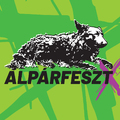
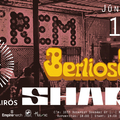
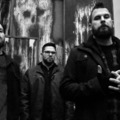
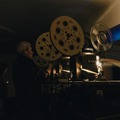
A bejegyzés trackback címe:
Kommentek:
A hozzászólások a vonatkozó jogszabályok értelmében felhasználói tartalomnak minősülnek, értük a szolgáltatás technikai üzemeltetője semmilyen felelősséget nem vállal, azokat nem ellenőrzi. Kifogás esetén forduljon a blog szerkesztőjéhez. Részletek a Felhasználási feltételekben és az adatvédelmi tájékoztatóban.
Kommentezéshez lépj be, vagy regisztrálj! ‐ Belépés Facebookkal